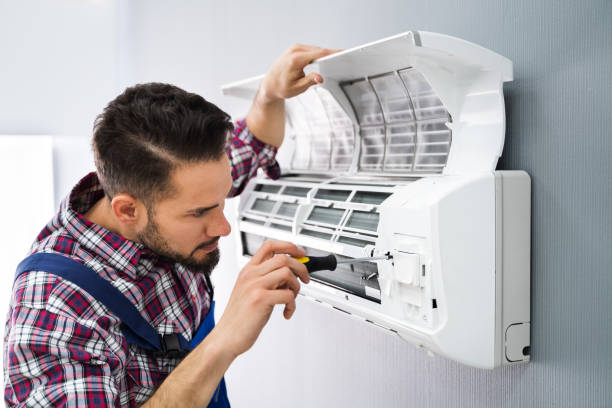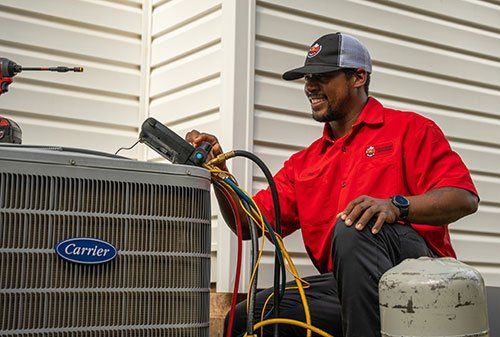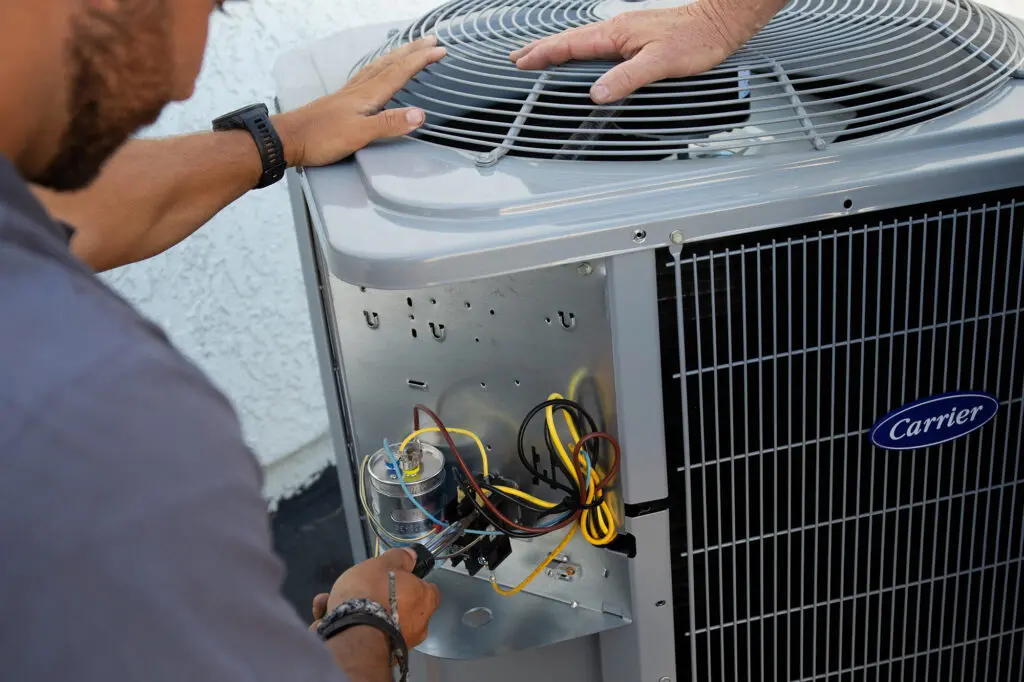Home AC Repair: DIY AC Repair Common Mistakes
AC Fix: Effective Climate Control Systems Are Essential For Indoor Comfort And Energy Savings
Parts and Systems: The Heating And Cooling Symphony
Ever question what really orchestrates the environment control in your home or office? It's even more than just a box humming here outside. We're discussing an advanced interplay of elements, a veritable symphony of engineering created to keep your comfort, come rain or shine, or even the most blistering heatwave. Understanding these individual parts, and how they coalesce into a unified system, is vital for any homeowner or facility manager. Consider it like a body: each organ has an important function, however it's their collective function that keeps us alive and flourishing.
The Core Players: What Makes it Tick?

At the heart of many residential and light commercial heating and cooling setups, you'll find a number of crucial gamers. Do you really know what each one does? Let's break down the important cast:
- Heater: The heating powerhouse, generally sustained by gas, propane, or electrical power. It warms the air that then circulates throughout your area.
- Air conditioning system: The cooling champion, eliminating heat and humidity from indoor air through a refrigerant cycle.
- Ductwork: The circulatory system of your a/c, a network of channels that distributes conditioned air to numerous rooms and returns stale air for reconditioning. Without correctly sized and sealed ducts, even the most effective system can fail.
- Thermostat: The brain of the operation, permitting you to set and preserve preferred temperature levels. Modern thermostats are capable of unbelievable accomplishments, from Wi-Fi connection to learning your preferences.
Beyond the Fundamentals: Integrated Systems
While the furnace and ac system are frequently distinct systems, they often share common aspects, forming an integrated system. For circumstances, the same blower fan within the furnace often moves air for both heating & cooling. This smooth integration is what makes a modern heating and cooling system so effective and easy to use. Think about the traditional situation: a sweltering summer season day gives method to a remarkably chilly night. Your system, if appropriately developed, transitions effortlessly from cooling to heating, making sure continuous comfort without you lifting a finger. It's really a marvel of modern comfort technology.
Improving Air Quality: More Than Simply Temperature level
Beyond simply heating up and cooling, modern heating and cooling services frequently include parts aimed at improving indoor air quality. Are you knowledgeable about the unnoticeable hazards lurking in your air? From allergens to toxins, an excellent system actively fights them. This can consist of sophisticated filtering systems, humidifiers to add wetness in dry environments, or dehumidifiers to extract excess humidity. Some systems even integrate UV lamps to kill air-borne pathogens. It has to do with creating a holistic environment, not just a comfortable temperature level. After all, what good is comfort if the air you breathe is below average?
Heating & Cooling Concepts: The Hidden Ballet of Convenience
Ever question why one room seems like a sauna while the next is an icebox, regardless of your thermostat's impassioned prayers? The answer often lies in a nuanced understanding of heating and cooling principles, a subtle dance of energy transfer that determines our indoor comfort. It's not almost cranking up the air conditioning or stoking the furnace; it's about managing the flow of heat, that persistent tourist constantly looking for equilibrium. Believe of it like water streaming downhill-- heat always moves from warmer locations to cooler ones. This basic fact underpins every element of reliable a/c system operation, yet it's frequently neglected, resulting in relentless pain and, frankly, wasted energy.
The Elusive Even Temperature Level
The most common aggravation homeowners voice centers on unequal temperatures. You adjust the thermostat, expecting a blanket of convenience, just to find one space sweltering while another shivers. Why does this happen? Typically, it's a symptom of improperly sized or badly well balanced ductwork. Think of a garden pipe trying to water a whole lawn; some areas get soaked, others stay dry. Likewise, if your ductwork isn't designed to provide the best volume of conditioned air to each area, cold and hot spots become an inescapable reality. A common error is presuming that merely including more vents will fix the problem. In reality, it can exacerbate it by interfering with the fragile balance of atmospheric pressure within the system. A heating and cooling professional worth their salt will perform a Manual J load estimation, a detailed analysis that determines the accurate heating and cooling needs of each room, taking into consideration elements like window size, insulation, and even the number of occupants. Without this foundational step, you're basically flying blind.
Tricks of the Trade for Optimum Efficiency
- Zoning Systems: For ultimate control and performance, think about a zoning system. This permits you to divide your home into unique temperature zones, each with its own thermostat. No more heating or cooling unoccupied rooms! It resembles having several mini-HVAC systems tailored to your way of life.
- Duct Sealing: Leaky ducts are infamous energy thieves. A significant portion of conditioned air can leave through unsealed joints and holes before it even reaches your living space. Professional duct sealing with mastic or customized tape (not simply common duct tape, which stops working rapidly) can considerably enhance effectiveness and remove phantom drafts.
- Insulation's Role: Your home's insulation functions as the bouncer for heat, preventing it from crashing the celebration in summer season and escaping in winter. Is your attic properly insulated? Are your walls mere sieves for thermal energy? A basic evaluation can expose considerable opportunities for enhancement.
- Fan Settings Matter: Many house owners just set their fan to "auto." While usually fine, think about running your fan constantly on a low setting, particularly in shoulder seasons. This assists circulate air, reducing temperature level stratification and making your home feel more regularly comfortable, even if the primary heating or cooling isn't actively running.

Understanding these essential heating and cooling principles empowers you to make educated decisions about your home's convenience and energy consumption. It's not just about repairing a broken unit; it has to do with orchestrating a symphony of warmth and coolness, ensuring every note is played just right.
The Breath of Life: Ventilation and Air Quality
Ever walked into a room and felt that immediate stuffiness, that sense of recycled air holding on to your lungs? It's a typical experience, a subtle yet relentless discomfort that typically goes unaddressed. Lots of property owners, focused on cooling and heating, overlook the vital function of ventilation in their a/c system. It's not almost temperature; it has to do with the extremely air we breathe. Consider your home as a living organism; without proper airflow, it suffocates, trapping pollutants, allergens, and even stale smells. This oversight can result in a host of indoor air quality problems, a silent assailant wearing down convenience and potentially impacting wellness.
One of the most substantial obstacles property owners deal with in keeping remarkable indoor air quality centers on the build-up of tiny air-borne particles. These unnoticeable intruders, ranging from allergen and pet dander to mold spores and volatile natural substances (VOCs) off-gassing from furniture, circulate endlessly without sufficient air exchange. Think of trying to clean a dirty room by simply moving the dust around; that belongs to recirculating stagnant air without presenting fresh, filtered air. This constant re-exposure can intensify respiratory conditions, trigger allergies, and usually diminish the sensation of a clean, healthy living area. What can be done to really clear the air?
Beyond the Standard Filter: Advanced Air Filtration
While basic furnace filters catch bigger particles, they frequently fall short when it pertains to the truly minute pollutants. This is where the critical homeowner thinks about updating their HVAC system's air purification. Have you considered a MERV 13 or higher filter? These pleated powerhouses can trap a considerably higher portion of airborne particles, including germs and even some viruses. The journey to beautiful air doesn't end there. For a genuinely comprehensive technique, UV germicidal lights incorporated into your ductwork use an additional layer of defense, neutralizing air-borne pathogens as they pass through. It resembles having a microscopic bouncer for your air, ensuring just the cleanest molecules make it into your home. And for those with consistent smell issues or chemical level of sensitivities, a whole-house activated carbon filter can be a game-changer, absorbing gaseous toxins that even the finest particle filters miss. It has to do with proactive defense, not reactive relief.
- Inspect and replace air filters quarterly, or more frequently if you have animals or allergic reactions.
- Think about a whole-house humidifier or dehumidifier to control indoor humidity levels, which can impact mold development.
- Make sure proper sealing of ductwork to avoid unfiltered air from entering the system.
- Make use of exhaust fans in bathroom and kitchens to remove wetness and cooking smells at their source.
Did you understand that simply opening windows for a few minutes each day, even in winter, can dramatically improve indoor air quality by diluting pollutants? It's an easy, economical technique that many ignore. Tactically positioned indoor plants, such as spider plants or peace lilies, can act as natural air purifiers, soaking up particular toxins from the air. While they will not change a robust ventilation system, they provide a quaint, green complement to your indoor air technique. The goal is to create an environment where the air is not simply comfy in temperature, but genuinely invigorating to breathe.
Installation and Upkeep: The Unsung Heroes of A/c Longevity
Ever wonder why some a/c systems purr like contented kittycats for years while others sputter and cough their dying breath far too quickly? The trick, dear reader, often lies not in the preliminary purchase, but in the careful dance of installation and the thorough rhythm of maintenance. It's a tale as old as time, or a minimum of as old as air conditioning itself: a system, no matter how advanced, is just as great as its setup and subsequent care. An improperly installed unit can cause a cascade of problems, from inefficient operation that drains your wallet quicker than a dripping faucet to premature part failure. Imagine trying to run a marathon with ill-fitting shoes; you may complete, however not without considerable pain and possible injury. Your HVAC system faces comparable adversities when not properly incorporated into your home's unique thermal envelope.
Think about the air flow. A typical oversight throughout installation, and one that causes untold headaches, focuses on appropriate ductwork sizing and sealing. It resembles attempting to consume a milkshake through a small, punctured straw-- you're exerting a lot of effort for really little reward. Undersized ducts limit air flow, requiring the blower motor to work harder, consuming more energy, and reducing its lifespan. Leaking ducts, on the other hand, resemble tossing money out the window, actually, as conditioned air escapes into unconditioned spaces. Did you know that as much as 30% of a home's heating and cooling energy can be lost due to leaky ducts? It's an incredible figure, typically neglected, and quickly corrected with correct sealing techniques utilizing mastic or customized metallic tape, not just the flimsy cloth-backed duct tape everybody mistakenly calls "duct tape."
The Rites of Routine Upkeep
You've got a completely installed system. Now what? The journey doesn't end there; it merely starts a brand-new chapter: upkeep. Think of your a/c system as a high-performance vehicle. Would you ever avoid oil modifications or tire rotations? Naturally not, due to the fact that you understand the long-lasting repercussions. Overlooking your Heating and cooling system's annual tune-ups is a gamble you're unlikely to win. These aren't just arbitrary appointments; they are essential preventative procedures. A professional checks refrigerant levels (the lifeblood of your system), cleans coils (those unrecognized heroes of heat exchange), inspects electrical connections (avoiding prospective fire threats), and lubes moving parts. It's throughout these visits that small issues, easily corrected, are caught before they bloom into costly breakdowns. An unclean evaporator coil, for instance, can reduce performance by 5-10%, requiring your system to work harder to accomplish the desired temperature. It's like attempting to breathe through a clogged up nose; whatever ends up being more hard.
Here are a couple of professional insights to keep your system humming:

- Filter Skill: Modification your air filter every 1-3 months, particularly if you have animals or allergies. A clogged filter is a significant airflow obstacle, minimizing efficiency and putting pressure on your system.
- Clear the Condensate Drain: Occasionally pour a cup of distilled vinegar down your condensate drain line. This prevents algae and mold growth that can obstruct the line, leading to water damage and system shutdown.
- Outdoor Unit TLC: Keep the location around your outdoor condenser system clear of debris, leaves, and thick plant life. A foot or 2 of clearance on all sides guarantees appropriate air flow, which is vital for efficient heat dissipation.
- Thermostat Knowledge: Consider upgrading to a programmable or wise thermostat. These gadgets can discover your practices and enhance temperature settings, saving energy and extending the life of your system by lowering unneeded cycling.
Keep in mind, a little proactive effort in setup and maintenance goes a long way in ensuring your HVAC system supplies constant convenience and performance for years to come. It's not practically convenience; it has to do with securing your financial investment and guaranteeing peace of mind.